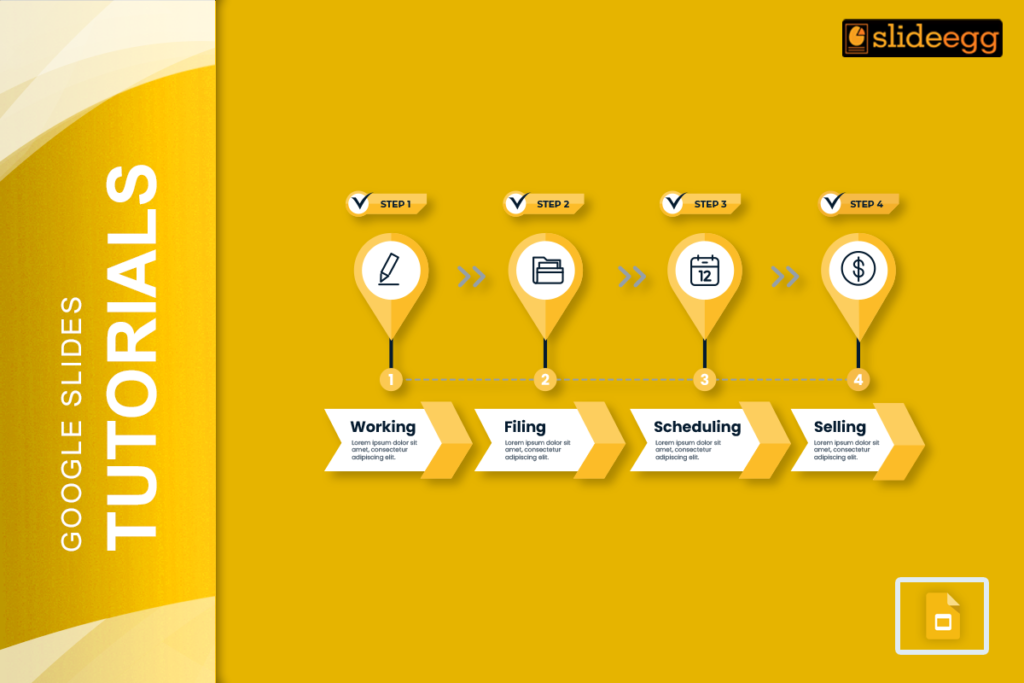Timelines are a powerful way for presenting information chronologically. It will help you illustrate project milestones, historical events, or personal achievements in an organized manner. Google Slides provides an easy way to create engaging timelines. In this blog post, we’ll walk through the steps to craft a professional-looking timeline that captivates your audience.
What is a Timeline and Why Use It?
Timelines visually depict events in chronological order, highlighting key milestones. It can be used for numerous purposes, such as:
- Project Management: Tracking project milestones and deadlines.
- History Lessons: Illustrating historical events and their progression.
- Marketing Plans: Outlining campaign timelines and key activities.
- Personal Use: Planning events, vacations, or tracking personal goals.
By visualizing information this way, you make it easier for your audience to understand and retain the data presented.
Step-by-Step Guide to Creating a Timeline in Google Slides
Step 1: Open Google Slides and Make a New Presentation
1. Go to Google Slides.
2. Click on the blank presentation or choose a template from the gallery.
Step 2: Choose a Theme
Before you start designing your timeline, select a theme that suits your presentation. Google Slides offers a variety of free themes, or you can find additional options online. This will ensure consistency in your design and save you time later.
Step 3: Insert a Timeline Diagram
1. Go to the slide where you want to add the timeline.
2. Navigate to the “Insert” menu on the toolbar.
3. Select “Diagram” from the dropdown.
4. Choose “Timeline” from the options available on the right side.
Step 4: Customize the Timeline
1. Choose the Layout: Google Slides provides several timeline layouts. Choose the right format that aligns with your requirements.
2. Add Dates and Descriptions: Click on the placeholders to add dates and descriptions of the events. Keep the text concise and clear.
3. Adjust Colors and Fonts: Customize the timeline’s colors and fonts to match your theme. This can be done through the Format Options menu.
Step 5: Enhance with Images and Icons
To make your timeline more engaging, consider adding relevant images and icons:
1. Click on “Insert“.
2. Select “Image” or “Shape” to add visual elements.
3. Use icons from Google Slides or import them from free icon libraries online.
Step 6: Final Touches
Before finalizing your timeline, review your slide for any errors or inconsistencies:
1. Check Spelling and Grammar: Ensure all text is error-free.
2. Consistency: Make sure the fonts, colors, and sizes are consistent throughout.
3. Alignment: Align all elements properly for a neat appearance.
Pro Tips: Utilize Pre-made Timeline Templates
If you’re short on time or need inspiration, there are many pre-made timeline presentation templates available online. These templates are fully customizable and can save you a significant amount of effort. Simply search for free Google Slides timeline templates, download the one you like, and modify it to fit your content.
Additional Tips for a Great Timeline Presentation
- Interactive Elements: Add links to detailed sections or external resources for more information.
- Animations: Use subtle animations to make your timeline dynamic but avoid overdoing it.
- Clear Headings: Use clear and descriptive headings for each section of your timeline.
For more detailed tips and tricks for creating engaging presentations, check out our tips & tricks page.
Conclusion
Creating a timeline in Google Slides is a straightforward process that can significantly enhance the clarity and impact of your presentations. Following this step-by-step guide will help you design an engaging and clear timeline to convey your information effectively.
Whether you’re tracking project milestones, illustrating historical events, or planning a marketing campaign, a well-designed timeline is a valuable tool. Don’t forget to explore free Google Slides themes and pre-made templates to streamline your process and ensure a polished final product.







